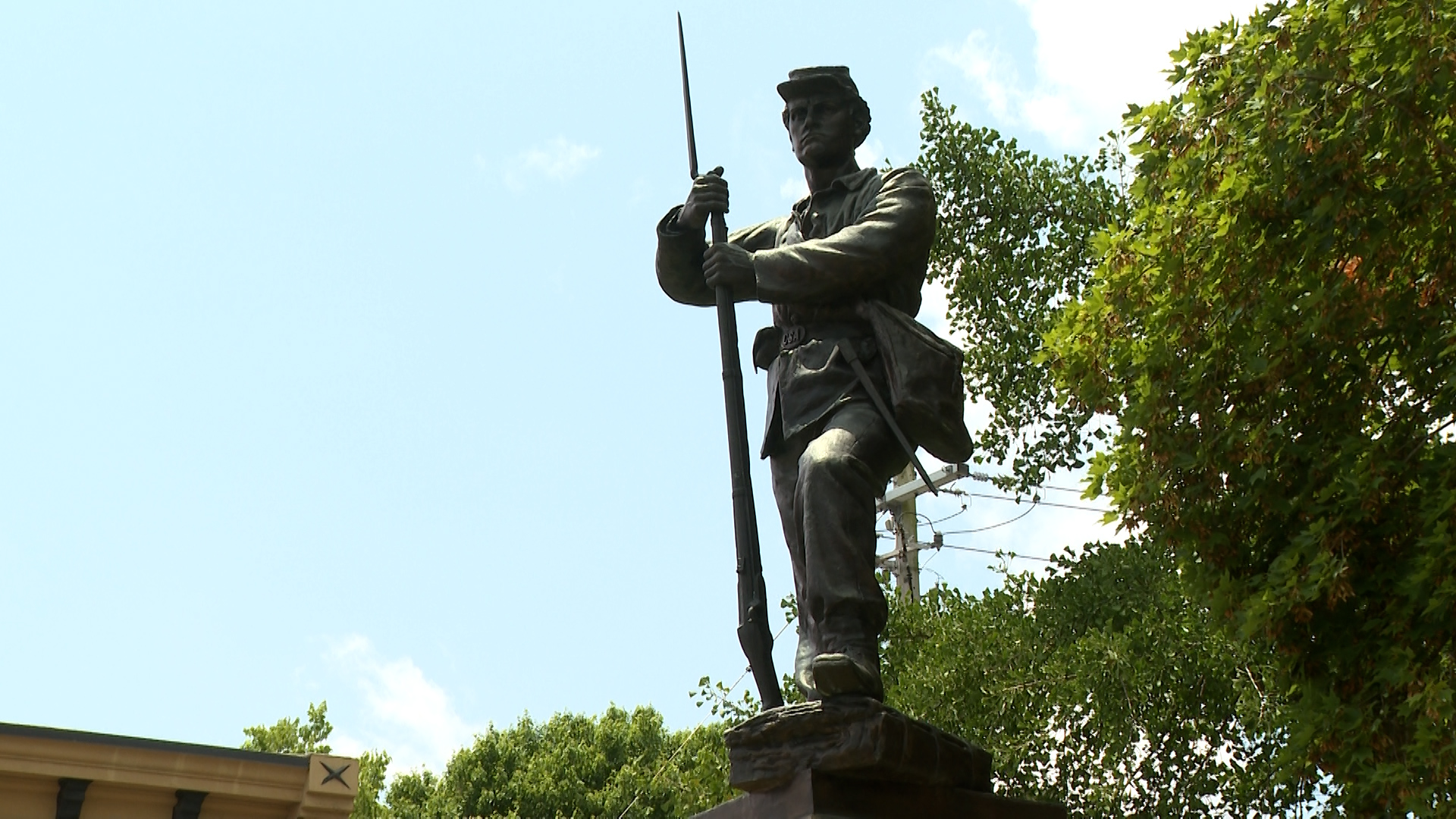There is something distinctly Kentuckian about the story behind the statue that stands on the lawn of the Jessamine County courthouse.
In 1896, this statue was originally commissioned as a Union soldier for another county in Kentucky. But, when the aforementioned county was unable to pay for it, Jessamine County took the opportunity to purchase it for a discounted price. However, upon being sold to Jessamine County, the letters “U.S.” that were originally inscribed on the belt buckle were sanded down and changed to “C.S.A.” So, what we’re left with is, by all accounts, a Union soldier wearing the wrong belt standing as a memorial to the Confederate lives lost during the Civil War. It’s bizarre.
As historian David Swartz points out, “This renovation marked the transition of the statue from Union to Confederate, not unlike Kentucky itself, a border state that turned Confederate only after the Confederacy was defeated.”
Throughout the past few years, there has been talk about potentially removing this Confederate statue from the lawn of the Jessamine County courthouse.
There are plenty of reasons why someone may want this statue removed. Many think that it is glorifying and covertly condoning the Confederacy. Conversely, others believe that it should remain standing as it is a part of our history that we must be careful to not forget.
Both stances, however, are much more nuanced than they seem. The first assumes that we erect statues and monuments to worship them and to declare them as good. The latter fails to acknowledge that this statue in particular may behave as a painful reminder of the injustice of the past.
Since the summer of 2020, this debate has been ongoing, and this issue still lacks resolution. What are we to do? Do we hide away the statue because we’re worried it glorifies the past? Or should we let it stand as a reminder of the horrors that white Americans committed so that we may remember our history? My concern is that if we remove the statue, we may be inadvertently erasing our own memory.
What good might it do for the future of history if we preserve our wrongdoing?
The easiest and most common response is that we should simply move the statue, perhaps to a museum. Another idea, which is fairly popular among many citizens of Jessamine County, is to move it to the nearby Maple Grove Cemetery. That way, history still stands, just not in such a public space. But I am not convinced that this would actually preserve our memory. Yes, there is value to museums or cemeteries which hold history, but when was the last time you went to a history museum? When was the last time you perused a cemetery for historical understanding? Do you remember what you learned? Did it matter to you?
The benefit of this statue remaining on Main St. in Nicholasville is that it forces us to face the reality of our past on a regular basis. It is a reminder that history is still near and that it certainly still affects us today.
The lives lost during the Civil War, whether Confederate or Union, should be honored, and that is first and foremost the purpose of this statue. In an interview on the topic with The Jessamine Journal, local historian and former professor of history at Asbury University, Glenn Spann said, “The best scholarship in American Civil War history has demonstrated, conclusively, that the soldiers who fought in the Confederate army did not fight to defend slavery, they fought to defend their homes.”
Every war fought is fought on the backs of the oppressed. War, ultimately, is about gaining or maintaining power at the expense of the marginalized. If we assume that every Confederate soldier stood for slavery, then this means all soldiers could be blamed for the atrocities of politics well out of their control.
And yet, their lives are still worth honoring.
That, however, does not resolve the debate taking place. There is still so much complexity in attempting to rightly preserve history for the sake of the past and the future. I think the answer may simply lie in reframing the way we understand history as it stands for our own collective memory. If the county chooses to keep the statue in its current location, then it should also create plaques to explain why it remains. To explain the story of the statue itself, to explain how this statue fits into the broader story of Kentucky’s history, and to explain why it is important that we remember the past.
Scottish philosopher and ethicist William MacAskill published a book in 2022 entitled “What we owe the future” and this phrase has ricocheted back and forth in my mind ever since. But I think it is also worth asking, what do we owe the past? I am not proud that I come from a state that was once a part of the Confederacy, but I think that is something I need to face every day. If nothing else, we owe the past acknowledgement. And I believe that if we do that well, we are also honoring the future.








